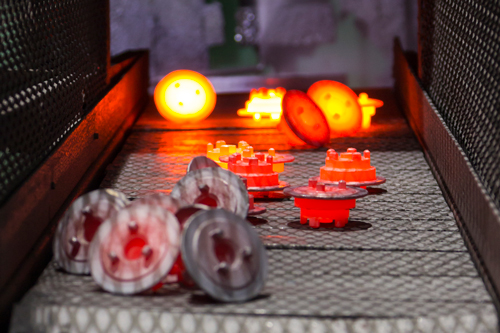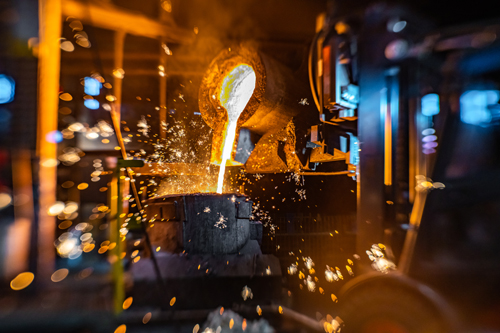Choosing the Right Aluminum Alloy Process: A Deep Dive into Forging vs. Casting
In the world of modern industrial design and manufacturing, aluminum alloy is the material of choice for engineers seeking a combination of lightweight, high strength, and corrosion resistance. However, a critical decision must be made: should my aluminum alloy parts be manufactured using Forging or Casting?
This is more than just a choice between two manufacturing methods; it directly impacts your product's final performance, production cost, lead time, and ultimately, its competitive edge in the market. As a company with nearly three decades of expertise in metal processing, we will guide you through an in-depth analysis of the fundamental differences, unique advantages, and ideal applications of aluminum forging and casting to help you make the most precise and cost-effective decision.
Aluminum Casting: Solidifying from a Liquid State
The casting process involves heating aluminum alloy until it becomes completely molten (around 700°C or 1300°F). This liquid metal is then poured into a mold cavity where it cools and solidifies into the final shape.
During this liquid-to-solid transformation, the metal's crystal grains form in a random and irregular pattern. This can lead to microscopic defects such as porosity, shrinkage, and gas pockets, as well as an inconsistent grain structure. These internal imperfections are the primary reason why cast parts inherently have lower strength and toughness compared to their forged counterparts.
Aluminum Forging: Shaping in a Solid State
The forging process, in contrast, works with aluminum alloy in its solid state. The metal is heated to a high-plasticity temperature (around 400-500°C or 750-930°F) and then shaped by immense pressure from a high-tonnage press.
This intense pressure and plastic deformation break down the original crystal grains, refining them and elongating them in the direction of the metal flow. This creates a continuous and dense fibrous grain structure, often called "flow lines." The resulting internal structure is extremely tight and uniform, eliminating the common internal defects found in casting.
How to Make the Right Choice: 5 Key Factors to Consider
To make the best decision for your project, we recommend evaluating these five key factors:
- Critical Performance Requirements: Will your part be subjected to high pressure, impact, vibration, or long-term fatigue loading? Is superior strength and reliability the top priority? Forging, with its dense and uniform grain structure, delivers exceptional strength, fatigue life, and impact resistance. This makes it the ideal choice for high-load, mission-critical components such as automotive suspension parts, aerospace structural components, and high-stress medical devices.
- Geometric Complexity: Does your design include intricate internal channels, ultra-thin walls, or complex hollow structures? Casting offers greater design freedom and is better suited for creating complex geometries. It is an excellent, cost-effective solution for producing large, intricately shaped parts in high volumes, especially when ultimate strength is not the primary concern. Common applications include engine blocks, pump housings, and lighting fixtures.
- Production Volume and Budget: Tooling costs need to be amortized over the total production volume. Casting often has a lower initial tooling investment, making it suitable for smaller production runs of large parts. However, for high-volume production of smaller parts, forging can offer a better overall cost-benefit due to higher material integrity and lower rejection rates.
- Dimensional Accuracy and Surface Finish: Do you require extremely tight tolerances or a flawless surface finish? While both modern forging and casting can achieve high dimensional accuracy, forging is the superior choice when a high-quality surface treatment is required. The dense, non-porous surface of a forged part ensures a higher yield rate and better results for subsequent processes like anodizing or painting.
- Market Positioning and Reliability Risk: Is your product intended for a high-risk industry like medical, aerospace, or automotive safety systems where failure could have severe consequences? Forging provides superior material consistency and reliability, significantly mitigating market risks and ensuring product integrity.


